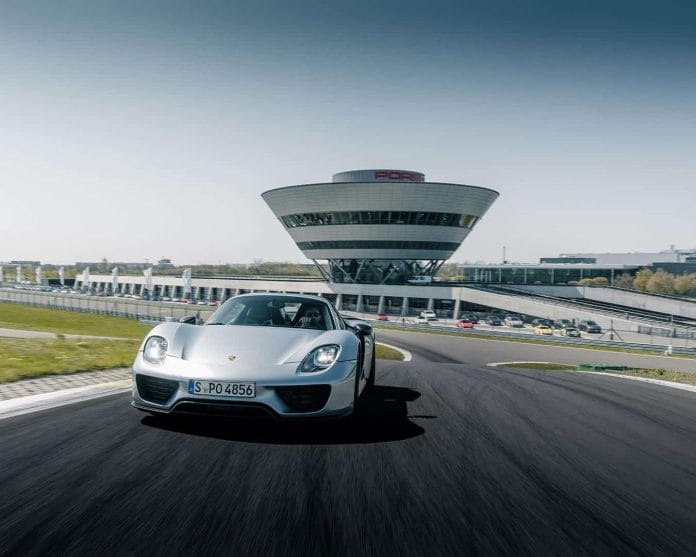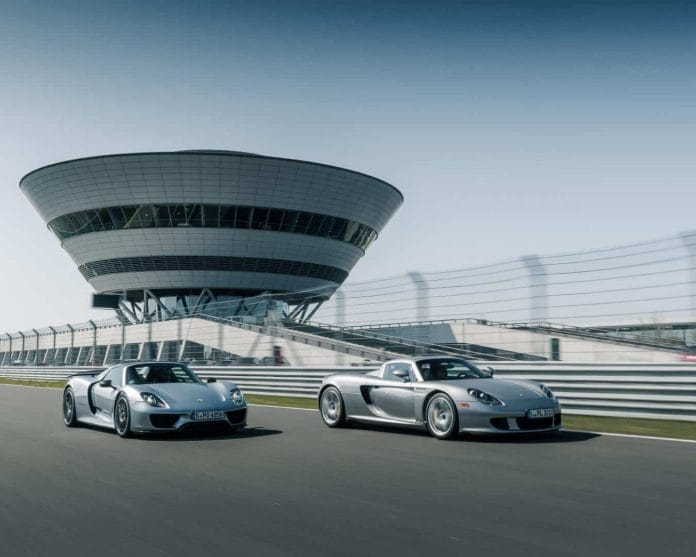Benefitting from its close technical relationship with the Porsche 919 Hybrid Le Mans Prototype 1 racecar that ruled the World Endurance Championship from 2014 to 2017, the road-going Porsche 918 Spyder laid the foundation for high-performance electrified Porsche models when it came out in 2013. Now, eight years after it first thrilled the world, the 918 Spyder remains as the definitive hybrid-powered super sports car.
To meet expectations, the 918 Spyder combines a combustion engine with two electric motors, with the system capable of exploiting the specific benefits offered by each power unit. A 4.6-liter, eight-cylinder engine delivers 608 hp while the two electric motors make 286 hp. The combined system output allows the car to sprint from zero to 100 km/h in 2.6 seconds, and to 200 km/h in 7.3 seconds.

Five driving modes optimize control of the single or mixed drive system, all of which activated by a “map switch” on the car’s steering wheel. Each model relies on a stored algorithm to determine the characteristics of the drive units and other systems. This means the 918 Spyder is capable of setting performance records on the track while at the same time remaining an uncomplicated sports car for daily use. It can even travel 30 kilometers in pure electric mode.
Further making the dynamic performance of the 918 Spyder possible is a unique all-wheel drive system in which the engine and an electric motor power the rear axle while another electric motor spins the front axle. This individually controllable front-wheel drive results in improved stability and traction at extremely high speeds, as well as during cornering.

The 918 Spyder also provided an important foundation for the thermal management of hybrid drives as it features five separate cooling loops and an innovative air- and water-cooling system for its rear electric motor. Plus, the car can convert far more kinetic energy into electrical energy than any other hybrid vehicle of its era because it can intelligently control the functions of its generator and conventional brakes. The result is enormous regenerative power that boosts efficiency and driving range.
A similar form of this recovery system was used in the 919 Hybrid that scored a 1-2 victory at the 24 Hours of Le Mans.
The 918 Spyder’s platform also blazed new trails via spectacular solutions, an all-carbon body, fully variable aerodynamics and adaptive rear-axle steering, among these. Adaptive aerodynamics and rear-axle steering have already made their way into production sports cars.
Clearly, the 918 Spyder has set cornerstones for high-performance electrified mobility while embodying classic Porsche virtues. In short, it contains the genetic blueprint now seen in current Porsche sports cars.

